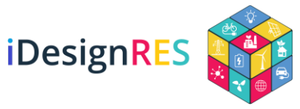Project description
The main project objective is to develop an implementable modeling framework to demonstrate the impact of sector coupling and integration of geothermal resources, heat pumps, VRES (variable renewable resources), and TES (thermal energy storage) in accelerating the transition into a fully decarbonized energy system in Europe and the United States. The innovation of the approach in FLXenabler is to take a holistic approach, examining simultaneously the decarbonization of heating and cooling and the flexibility this can provide at different scales when combining heat pumps, TES and geothermal resources, from local energy communities to national scale. Moreover, there is little understanding on the impact of storage of heat and cold at different time scales – including seasonal storage and underground TES (UTES) - on the value of Power-to-Heat (P2H) in the future power system. FLXenabler aims to understand the importance of TES in allowing more VRES in the power system, and the impact of wide-scale implementation of heat pumps, TES and geothermal energy in DE (District Energy) on investments in the surrounding energy system.
The goals and innovations of the Austrian subproject are as follows: Tailor-made further development of the existing open-source modeling tool GUSTO to better represent all local renewable resources, sector-coupling technologies, all relevant energy sectors and end-uses, local energy distribution networks and related local energy sharing concepts based on energy communities. Application of the tool GUSTO to allow for quantitative case study analyses (proof-of-concepts) of low-carbon local energy communities emphasizing flexible local heating and cooling supply not only for Austrian cases, but also for all the other local neighborhoods in Norway and the U.S.. Quantification of local heating and cooling related flexibility potentials available for “export” to upper-level energy systems under different local energy community configurations and, subsequently, to be used in European energy system model GENeSYS-MOD. Finally, best practices and possible future business cases are derived, again covering all countries involved in this project and not limited to Austria.






